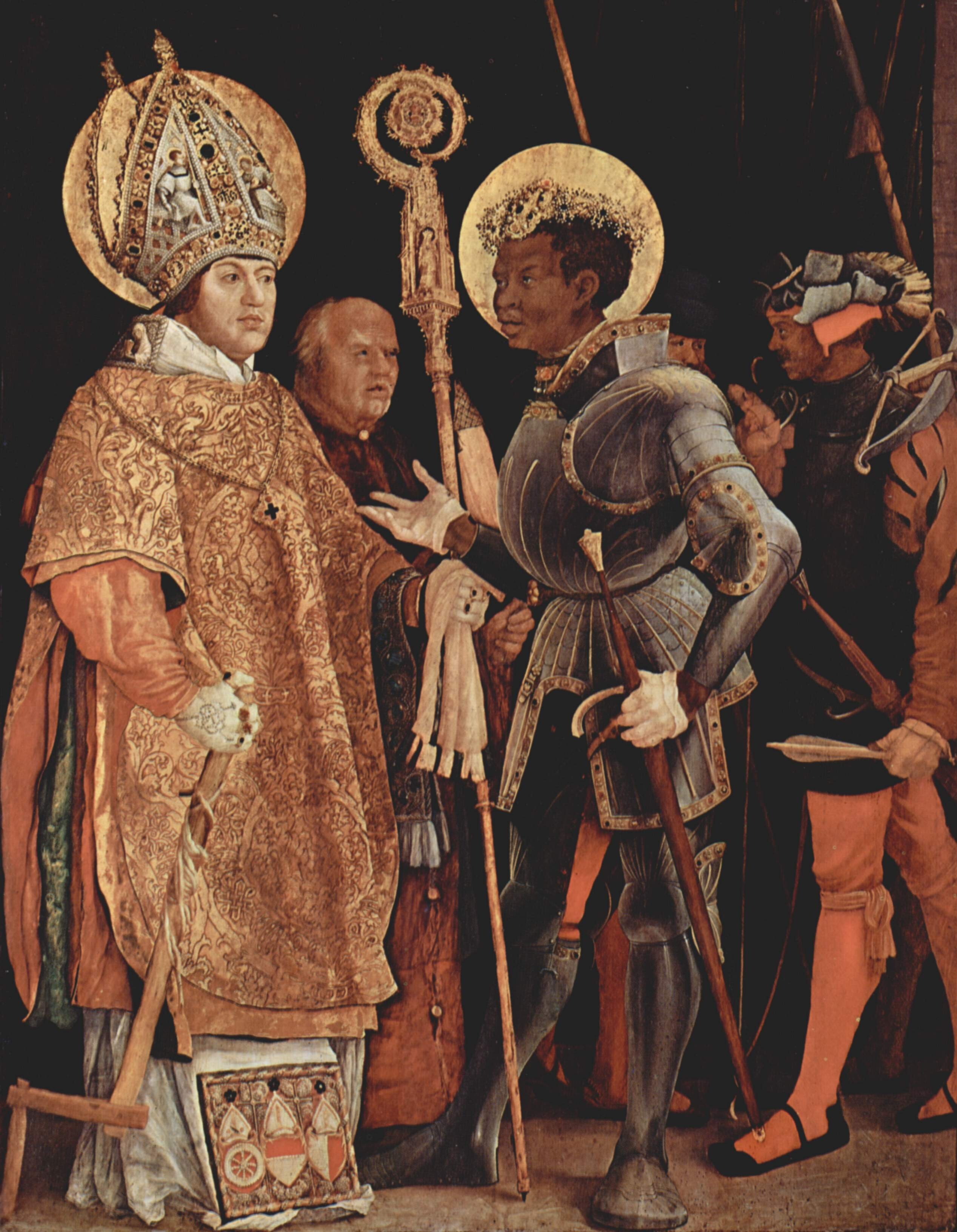St. Maurice was believed to have lived in the third century in Thebes in Upper Egypt. He enlisted in the Roman army and was eventually promoted to commander of the Theban legion. Maurice and his entire legion was openly Christian during a period in which Christianity was not tolerated. They were ordered to Europe to engage the Guals along the Roman boarder by Emperor Maximian (d. 310). When the legion was called to sacrifice to the pagan gods, Maurice and his entire legion refused. As punishement, one of every ten of his soldiers was executed (decimation). When Maurice still refused, a second decimation was ordered, and eventually the entire legion and Maurice were executed. A cult grew around the martyrs in Switzerland, where their relics were preserved, and St. Maurice became one of the most popular and important saints in Europe.
Image from Wikipedia, credit Mathias Grünewald - The Yorck Project (2002) 10.000 Meisterwerke der Malerei (DVD-ROM), distributed by DIRECTMEDIA Publishing GmbH. ISBN: 3936122202.

Office of St. Maurice, Beinecke Library MS 481.25, f. 18v. Noted Breviary (fragment), Southern German, late eleventh century.
The Beinecke Library does not have any illuminations of St. Maurice, but it does have an important fragment from the liturgy devoted to him. BL MS 481.25 is a fragment from the eleventh century written by a scribe in a script similar to that of Otloh of St. Emmeram. It is difficult to know how Europeans thought of the many saints from Africa and what value they placed on race. As the work of Geraldine Heng helps us to explore the construction of race and racism in the Middle Ages, the study of African saints provides a rich pathway for further inquiry.
